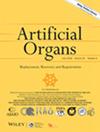Long-Term Liver Machine Perfusion Preservation: A Review of Recent Advances, Benefits and Logistics
Abstract
Background
The global shortage of suitable donor livers for transplantation has prompted efforts to expand the donor pool by using extended criteria donors. Machine preservation technology has shown promise in optimizing graft preservation and improving logistics. Additionally, it holds potential for organ repair, regeneration, therapeutic applications during extended preservation periods, and enhancing organ allocation.
Methods
We conducted a comprehensive literature review using PubMed, Embase, and Web of Science databases. All studies published between January 1, 2022, and February 7, 2024, that described machine perfusion preservation of livers for more than 24 h were eligible for inclusion. The findings were synthesized in a narrative review format to highlight key benefits and advancements.
Results
We identified eleven studies from multiple research groups, employing various techniques, devices, and preservation durations. Perfusion durations ranged from 1 to 13 days, with notable variations in protocols for long-term preservation beyond 24 h. Viability was assessed during perfusion only. No livers were transplanted. Among the reviewed studies, the introduction of a dialysis system emerged as the most effective strategy for managing waste accumulation during long-term liver perfusion. Differences were also observed in hemodynamics, oxygenation, organ chambers, supplemental regimens, and glycemic control.
Conclusion
Over the past two years, substantial progress has been made in refining protocols for long-term liver machine perfusion, with significant advancements in waste management, enabling successful multi-day perfusions. While these developments are promising, further research is necessary to standardize and optimize long-term perfusion protocols, establishing a reliable platform for both organ preservation and therapeutic applications.


 求助内容:
求助内容: 应助结果提醒方式:
应助结果提醒方式:


